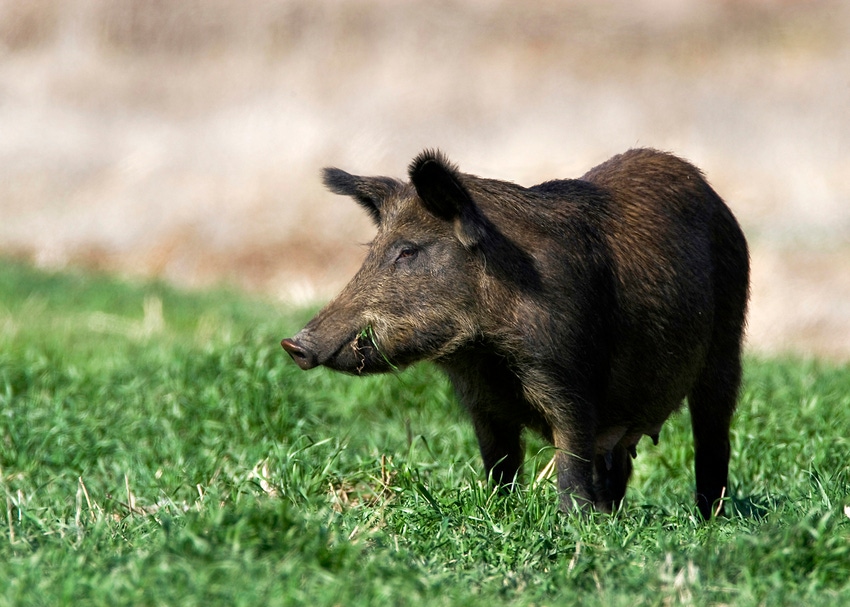October 3, 2017

The number of wild hogs living in an area determines the severity of their impact on wildlife, as these invasive creatures eat any source of nutrition they can find.
Bronson Strickland, Mississippi State University Extension Service wildlife biologist and wildlife management specialist, said wild hogs impact other wildlife in two ways. “There is no debate whatsoever that, if your property is saturated with pigs, they compete with wildlife. There is food competition, where they eat the same foods that a deer, turkey, rabbit, turtle or some other wildlife is going to eat. This lowers the number of animals that land can support.
“The other impact is direct competition. Wild hogs also eat the wildlife. Hogs can eat any vertebrate or invertebrate that makes a living on the ground and is in an immobile state. That means they’re eating wildlife, such as young turtles, snakes, alligators and even fawns.”
The significance of this impact on property and wildlife depends on the wild hog population living in the area.
“If you have a sounder, or group of hogs, moving through your property every couple of months, it won’t have a big impact on wildlife,” Strickland said. “But if they’re living on your property all the time, you have a big problem. The more hogs you have, the more damage they’re going to cause.”
Bill Hamrick, an Extension wildlife associate, said wild hogs’ ability to outcompete desirable wildlife is the main threat they pose.
“In addition to eating native wildlife’s food, wild hogs destroy habitat, nests and denning areas on the ground,” Hamrick said.
Hogs have negative impacts on water sources, as well. The animals wallow, urinate and defecate in streams, which can cause erosion and diminish water quality in an area.
Of great concern to hunters and wildlife enthusiasts alike is evidence that wild hogs in some areas of the state are very efficient in outcompeting deer for food resources. Hunting data from the last five years show that deer harvest in the state is trending downward, while wild hog harvest is trending upward.
“This is certainly a strong indicator that wild hog populations are on the rise,” Hamrick said. “There are some areas in southwest Mississippi that are starting to see greater numbers of wild hogs than deer. While a relationship has not been proven, where hog populations increase, hunters are starting to harvest fewer deer.”
Wild hog disease and disease transmission is unknown, so wildlife experts are unsure what impact this problem may have on natural mortality rates of wild hogs and native wildlife.
About the Author(s)
You May Also Like






